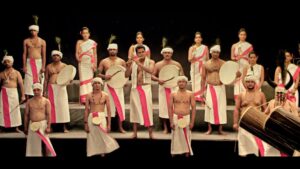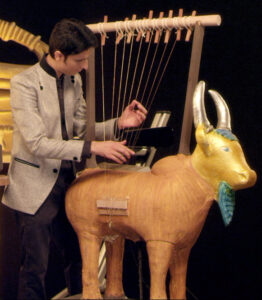Research shows musical instruments in vogue during Harappan period

Harappan musical Instruments
Shail Vyas
Indian Culture is thousands of years old and so is our Music. Music is woven so deeply in our culture that it appears completely inseparable. The very fact that The Vedas were composed with musical notations and rhythmic meters, is an ultimate proof of that. But how much do we know about the evolution of our music and musical instruments? What kind of musical concepts were present in Vedic era and in Harappan civilization? How old are the seven musical notes? How was the rhythm being played in those times? And how the language of music was used?

Unfortunately, such a research was never done for ancient Indian civilization. My research, Songs of Mystery Research Project, started in 2011. Till now about 20 musical instruments and other phenomena related to music have been identified from Harappan period (Indus Valley Civilisation), along with many more instruments from other ancient periods such as Vedic and epic. Harappan instruments that are identified include Harps, Bull shaped Lyre, large Dhol, Lute, Clappers, and many more.
But I’m a musician, and I’m far more interested in knowing how they sound and what kind of music can be performed using them? Thus, the objectives were not only to discover but to recreate and revive the instruments. Till now early prototypes of about 10 instruments from Harappan period have been recreated. I have also created a musical performance which features all of these recreations along with other instruments.

This is a multi-disciplinary research with data coming from Archaeology, Archaeomusicology, Linguistics and textual references, Anthropology and advanced modern technologies of sound modelling and synthesis among others.
Harappans had strong trade relations with Mesopotamia. Whenever people move to other places, their culture goes with them. Therefore, archaeological records were collected not only from Harappan sites but also from Mesopotamia along with textual reference from Sumerian and Akkadian records. This laborious exercise, surprisingly, has revealed a large set of linguistic data that strongly point towards a language that the Harappans may have spoken. This is the most fiercely debated question of ancient Indian history with respect to Aryan theory.

Many Indian instruments were also found on seals, drawings and tablets from Mesopotamia as well. Which suggests that along with trade many musical instruments too were exported to Mesopotamia from India in the 3rd millennium BCE. There seems to be a strong Harappan cultural impact on Mesopotamia.
Shail Vyas is a Homi Bhabha Fellow, Musicologist, Music Composer from Mumbai. He will present
all the textual records of his research at a seminar on July 20, 4pm at IIC, New Delhi.</p>


2 Comments
THIS HAS NO INFORMATION 🙁
I AGREE!!